
Seven New Nutrients of Our Kitchens!

Each of us developed different specializations about foods that will strengthen our immune systems especially during the pandemic period; we all tried to protect ourselves with many traditional recipes, from homemade yogurt to pickle juices, from sheep soup to pulses... Healthy life and healthy eating issues, which have shown themselves as trends for a while, have peaked with the pandemic process, causing many new tastes to be introduced to our kitchens…
Of course, the list is much longer, but we have compiled 7 healing nutrient sources we chose for you in this content with their history and delicious recipes!
1. Avocado
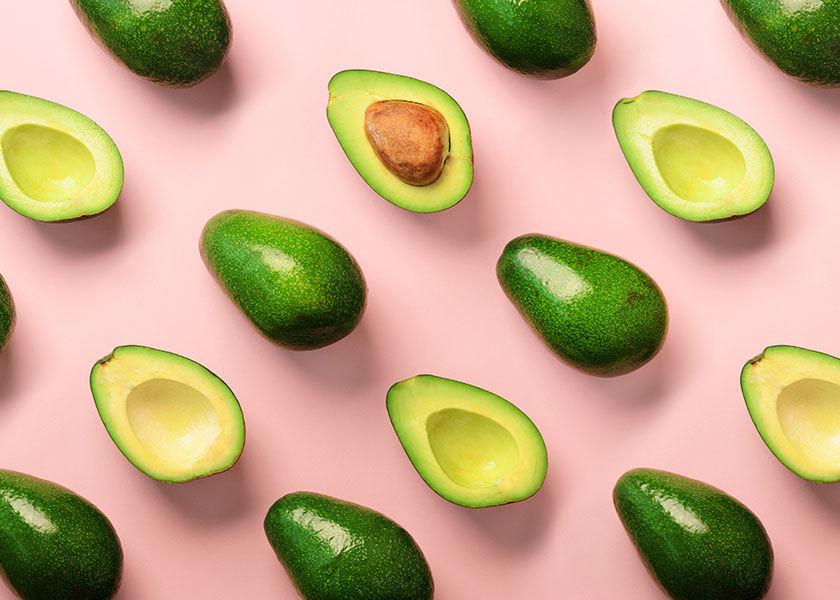
An amazing fruit spread from South America to the world! It is also known as "Alligator Pear" with its pear-shape and alligator-green skin. Avocado tree has a history dating back to 5,000 BCE in Central and South America. This single-core fruit spread across the world between the 17th and 19th centuries; and it has established itself a solid place in the food, health, and cosmetics sectors.
As for our country, it is said that it was first grown in Yalova by Molla Kamil Efendi in the 1700s and it was already on the table of the Istanbul elite in a short time. Unfortunately, the adventure of avocado in Ottoman cuisine did not take too long… During the Patrona Halil Uprising, which broke out in September 1730, avocado production ended in the Ottoman Empire because some rebels spread the rumor that the avocado “was the product of sexual intercourse between alligator and tree.” Only in the late 20th century, avocados were re-introduced our lands and kitchens.
Avocado, which is an extraordinarily rich food source, contains 20 different vitamins and various minerals. Despite its oily structure, it does not contain cholesterol. Although banana is the first that comes to mind when potassium is mentioned, it has a much higher potassium value than a banana and is easier to consume since its usage area is wider than a banana.
Speaking of usage area… You can consume avocado, which you can eat both as fruit and vegetable, in all your meals and even in your drinks. You can mix it with cheese and apply it to your bread or eat it next to your egg. You can also consume it bear with a lemon and mustard sauce. You can slice it to your salads and add them to your vegetable juices.
A Suggestion: Avocado Mac & Cheese
Ingredients:
- 2 large avocados, peeled and cut into cubes; you may need more for decoration
- 2 teaspoons of lemon juice
- 1/2 cup of butter
- 1/2 cup of flour
- 2 cups of milk
- Salt
- Black pepper
- 3 1/2 cups of grated cheddar cheese (otherwise you can use fresh cheddar)
- 1/2 cup of grated Parmesan cheese (otherwise you can use old cheddar)
- 1 packet of fusilli pasta, boiled
Recipe:
Add the avocados into a medium-sized bowl, pour the lemon juice so that it does not darken and mash it thoroughly. Melt the butter in a large frying pan, add the flour and fry for 2-3 minutes until the flour turns golden brown. Gradually add milk and continue mixing with the beater. Add salt and black pepper. Boil for about 5 minutes until it thickens. After turning off the stove, add the avocado that you previously crushed and the grated cheese to your pan. Mash until it takes a smooth form. Add the boiled pasta and make sure the whole pasta is soaked in the sauce. If you wish, add salt and black pepper and complete the decoration with the remaining avocados. Bon appétit!
2. Quinoa

Another extraordinary source of flavor grown in the Ant Mountains of South America. Both the leaves and seeds of the quinoa plant, which is thought to be cereal because it competes with cereals in terms of nutrition but comes from the same family as sugar cane and spinach - the Chenopodiaceae family - can be consumed.
Quinoa is called "Super Crop" since it can play an important role in combating hunger in the world by the United Nations, as it can grow on poor soil without any fertilization or different treatment, but this is not the only specialty of it. Quinoa, which has existed in the lands of South America for more than 5000 years, is considered sacred and was called "chisaya mama", that is, "the mother of all grains". So much so that the Inca emperors sowed their first crop with a ceremony every year.
With the conquest of the Spanish of the continent and the intention to eliminate the Inca culture, most of the agricultural areas have been destroyed, only some left in the mountainous areas. Some seafarers loaded this plant on their ships in hopes of growing it in Europe, but all the quinoa rotted in the long sea voyage. Quinoa, which met the modern world only in the 1970s, has found itself a solid place in our kitchens, though not as much as its old “sacred” days.
Quinoa, a complete source of protein, is also rich in manganese required for bone formation and health and connective tissues. Since it is a gluten-free food source and does not cause any allergic reactions, it can be easily consumed by people of all ages and suffering from various genetic conditions.
A Suggestion: Quinoa breakfast
Ingredients:
- 1/2 cup of uncooked quinoa
- 3/4 cup of coconut milk
- 2 tablespoons of water
- 1 tablespoon of brown sugar
- 1/8 teaspoon of salt
- 1/4 cup of grated coconut
- 1 cup of sliced strawberries
- 1 cup of sliced bananas
Recipe:
Heat your oven at 200 degrees. Pour the quinoa into a strainer. Put the strainer on a deep bowl. Fill the water so that the quinoa totally remains in the water. Rub the grains for 30 seconds with your hands, pour the water, briefly wash quinoa. Repeat this process two more times and strain the quinoa well.
Add quinoa, coconut milk, 2 tablespoons of water, brown sugar, and salt to a medium saucepan and then boil it. After boiling, turn down the heat and mix it for 15 minutes and let it brew.
Sprinkle the grated coconut on the baking paper you put on the baking paper and leave it in the oven you preheated for 5 minutes until it turns into a golden color.
Fill half your bowl with the quinoa mixture. Add as many strawberries, bananas, and roasted coconut as you wish on it and serve hot. Bon appétit!
3. Asparagus
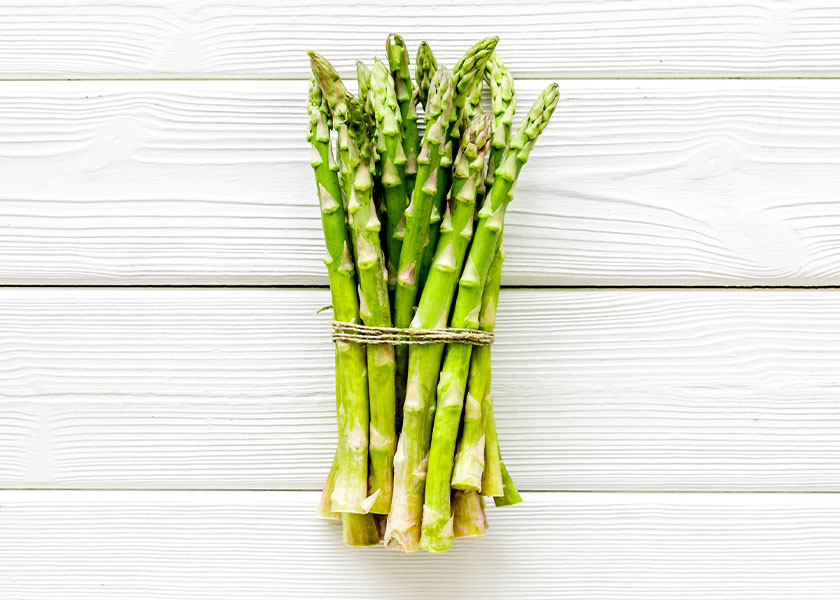
Coming from the lily family, asparagus is also a distant relative of the onion. This garden plant, which is thought to be food for humanity for 2,000 years, grows mainly on the Mediterranean coast, but wild species have also been found in Africa.
In ancient Greece, asparagus was considered an aphrodisiac and considered sacred. Greeks discovered the health benefits of this herb as well. Hippocrates -acknowledged as the father of the medicine- especially treated digestive and urinary tract problems with asparagus.
The Romans, on the other hand, were more interested in the flavor of this plant than its benefits. This food, which they consume in the starter plates or in addition to fish dishes, had been nearly forgotten in the Middle Ages, but its agriculture was continued by Arabs. Caesar's armies brought this plant back to Europe after their expeditions. Asparagus, which only nobles ate in the 16th century, is therefore known as the "Favorite of Kings". Asparagus started to appear as a meal of the public and in local cuisine recipes in the 18th century.
Asparagus, which is rich in vitamins, is a healthy food source with its fibrous structure. Thanks to the folic acid, phosphorus, and potassium it contains, it is not only a strong diuretic and anti-gravel, but it is also beneficial for eye and heart health.
A Suggestion: White Asparagus Salad with Tomato
Ingredients:
- 5 medium-sized tomatoes (4 chopped cold cuts, 1 cut into cubes)
- 2 tablespoons of lemon juice
- 1/2 teaspoon of mustard
- 1/2 teaspoon of sugar
- 1/2 cup of mayonnaise
- 3 tablespoons of olive oil
- 1 jar of white asparagus
- Salt
- Black pepper
- 1/2 kg green beans
- 1/2 red onion (finely chopped)
Recipe:
Blend and pulp cubed tomato, lemon juice, sugar, and mustard. Then, add the mayonnaise and olive oil to form a thick sauce and sweeten it with salt and black pepper. Add the freshly cleaned beans to the salt-water you boiled in a pot and then boil for about another 4 minutes. After straining the water, set aside to cool at room temperature. After cooling, add a little olive oil, salt, and pepper.
Place the beans, cold cut tomatoes, onions, and asparagus on your plate in style. You can serve it with the desired amount of the sauce that you have prepared on it. If some sauce remains, it is not a problem, you can use it the next day by storing it in the refrigerator. Bon appétit!
4. Pecan

Another flavor from South America! This type of walnut, consumed and traded by Native Indians long before the European invasion of South America, has been the food source of even pre-agricultural societies. It is an accessible food since it can not only be eaten by removing it from the tree in the season but also those fell to the ground are also edible.
“Pecan” is the word that Algonquin Indians use for “all nuts that require stones to break”. The introduction of pecan in Europe happened in the 16th century. Spanish explorers, who met pecan, called this walnut "nuez de la arruga", the "wrinkled walnut". Then these explorers took pecan to Europe, Asia, and Africa.
Although it is an oily nut, the oil it contains is not harmful. Pecan, a nutrient-rich in vitamin E, speeds up the immune activity as well as its antioxidant effect. It facilitates growth and activates metabolism with the protein and thiamine it contains.
A Suggestion: Chicken Salad with Pecan and Sour Cherry
Ingredients:
- Mixed green salad
- 2 grilled chicken breasts
- 1/3 cup of roasted, cracked pecan
- 2 tablespoons of shredded moldy cheese
- 2 tablespoons of dried sour cherries
For the sauce:
- 2 tablespoons of balsamic vinegar
- 1/2 teaspoon of mustard
- 1/2 teaspoon of sugar
- 1/2 tablespoon of salt
- 1/4 teaspoon of garlic powder
- 1/4 teaspoon of black pepper
- 6 tablespoons of olive oil
Recipe:
Mix the green salad, the chicken breast which you cook on the grill and cut the way you want, pecan walnuts, cheese, and sour cherry in a large bowl. In a separate bowl, whisk the ingredients needed for the sauce and then pour it into the salad and mix well. Bon appétit!
5. Buckwheat (Greckha)
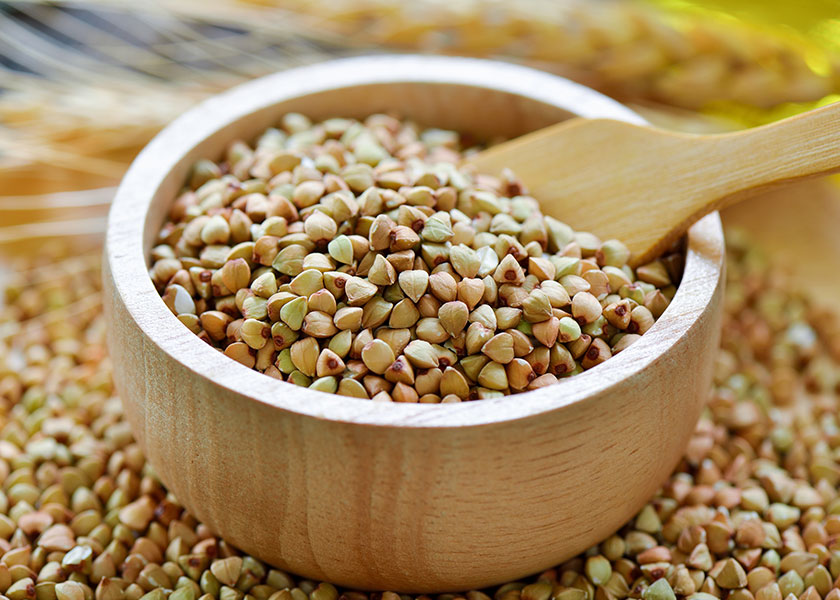
Another source of food that is thought to be grain due to its name, but it is not... Buckwheat is actually a fruit seed. It is covered with hard-shell-like sunflower seeds.
One of the oldest (up to 6,000 years old) farming products in the world, buckwheat is a food of Southeast Asian origin and quickly spread throughout Central Asia, the Middle East, Europe, Australia, and America. Japanese 'soba noodle' is made with buckwheat. That makes Japan as the top contemporary buckwheat importer.
However, no one can compete with the Russians regarding the consumption of buckwheat. The national dish of the Russians with buckwheat, the 'kasha' found its way into their proverbs: "shchi da kasha - pishcha nasha", "shchi and kasha are our meal" or "what we eat is cabbage soup and buckwheat porridge" in literal translation. The meaning behind this proverb is that "these two meals are enough to live" as well as "whatever happens in Russia, we still live in the same way." It is certain that the benefits of this nutrient powering the Russians who swim in the ice-cold water of Siberian cold!
Being a strong protein store, buckwheat is an important nutrient for our health with vitamin B and various minerals it contains.
A Suggestion: Homemade Cocoa Flakes for Breakfast
Ingredients:
- 100 g coconut oil
- 200 g honey
- 100 g powdered cocoa
- 850 g buckwheat
- 150 g chocolate drops
- A little bit of salt
Recipe:Heat your oven at 180 degrees. Place baking paper on two baking trays. Mix coconut oil, honey, cocoa powder, and a pinch of salt in a large bowl and melt them in the microwave. Then mix the buckwheat in such a mixture that it is thoroughly soiled. Spread your mixture on trays and bake for 15 minutes. In the middle of this 15-minute period, open the oven and reorder the trays. Then add the chocolate drops and wait for it to cool. You can store the cooled cereals in an airtight container or jar for up to 1 month. This way you and your children
can start the day by storing energy. Bon appétit!
6. Chia Seed
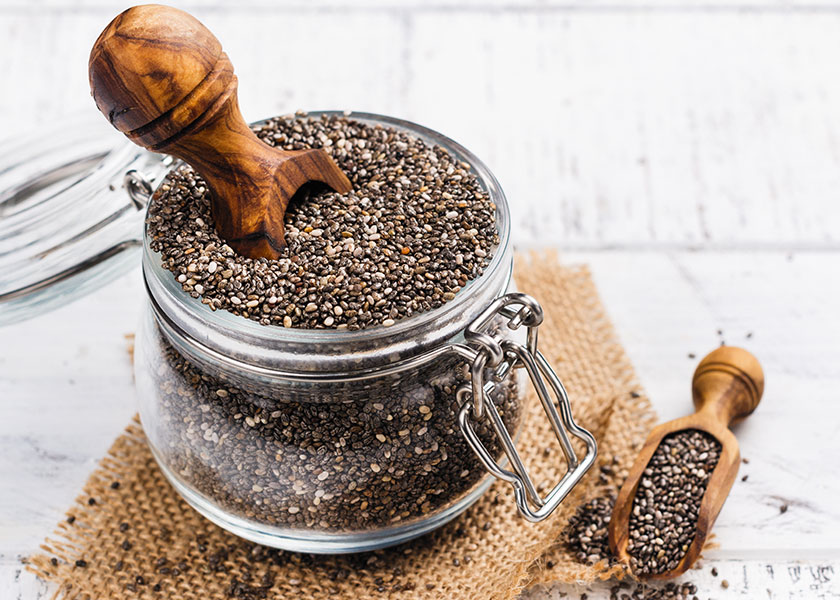
The use of chia seeds as food goes back to 3,500 BCE, the era of Aztecs. In fact, this food source was the most important ingredient in Aztec cuisine. They also consumed this seed in pharmaceutical production, in flour, and by adding it to drinks. It was even used as a sacrifice in religious ceremonies.
The meaning of the word for chia seed in the Maya language -which is one of the indispensable preferences of travelers due to its easy preservation and durable structure- is “power”. We must say that the probable reason for this is the nutritional value that gives energy. Ancient warriors also owed their power to this seed. The Mexican Tarahumara tribe was also famous for its runners; there was a special drink consumed by the runners and of course, its main ingredient was chia seeds. According to legend, they could run hundreds of kilometers by drinking this drink…
Spanish, conquering Americas banned this food due to its religious use. However, chia seeds have gained back its respected reputation today, as they continued to be grown both naturally and by humans in some parts of Mexico.
Since it does not have a dominant taste, chia seeds can be included in many recipes. It can even be used in place of eggs to have consistency in soups as it secretes a type of gel when contacted with liquid. Thanks to the Omega-3 it contains, it has important benefits in terms of brain and heart health. It balances the insulin level, provides energy, and contributes to muscle and bone development. It is an important tool in the fight against obesity with its melting feature of abdominal fat.
A Suggestion: Chia Seed Tonic with Turmeric and Ginger
Ingredients:
- 1 cm of peeled and chopped ginger
- 1 cm of peeled and chopped turmeric (or 1/2 teaspoon of turmeric powder)
- 1/3 cup of honey
- 1/4 cup of fresh lime juice
- 2 teaspoons of black pepper
- 1 tablespoon of chia seeds
- 3 cups of water
- Soda or mineral water
- Fresh thyme for decoration (optional)
Recipe:
Blend ginger, turmeric, honey, lime juice, black pepper and 3 glasses of water through the blender. Strain into a separate bowl using a fine-mesh strainer. Add the chia seeds and wait 8-10 minutes for the seeds to release themselves. Put a few ice cubes in your glasses and pour the mixture until filling the half of the glass, then add soda or mineral water. You can decorate it with thyme. Bon appétit!
7. Peanut Butter
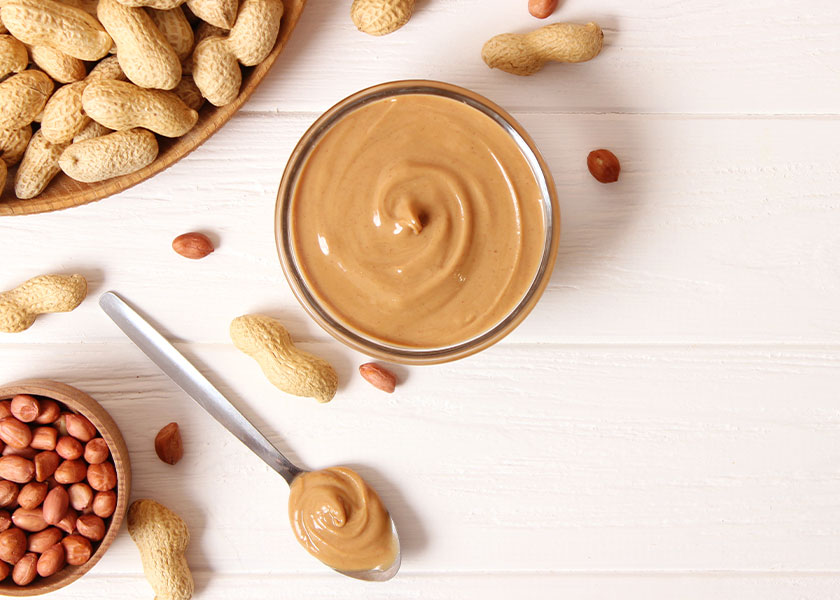
A food source dating back to the Incas and Aztecs: Peanut butter. Of course, back in those days, they would not consume it as we know today, but they would crush the roasted peanuts into a paste. Thanks to three different inventors, it took today's shape.
In 1884, Canadian Marcellus Gilmore Edson patented peanut butter made by crushing roasted peanuts between two heated surfaces. And in 1895, Dr. John Harvey Kellogg (founder of Kellogg flakes) patented a crushing process using raw peanuts. His goal of getting this patent was that people who have problems chewing hard foods can also be fed healthy foods. In 1903, Dr. Ambrose Straub of Missouri patented a machine that produces peanut butter.
Peanut butter, which has a high content of unsaturated fat, is good for the heart and reduces the risk of both heart disease and type 2 diabetes. It is a natural energy store as it contains many vitamins and minerals. It is a nutrient that helps to lose weight thanks to the abundant protein and fiber it contains. Moreover, it prevents the sweet craving!
A Suggestion: Your Own Peanut Butter
Ingredients:
- 2 cups roasted dry peanuts
- 1-2 tablespoons of honey or sugar (according to your taste)
- A little bit of salt
Recipe:
Put the peanuts in the food processor and blend for 4-5 minutes. You will see that the peanuts first be crumbled into a dry ball and then turn into an oily liquid. Then pour sugar or honey and a little bit of salt in it and mix it again. If you think you will consume it quickly, you can store it at room temperature, if you cannot consume it quickly, you can keep it in the refrigerator for a few weeks. Bon appétit!










